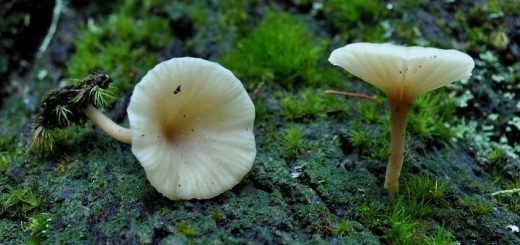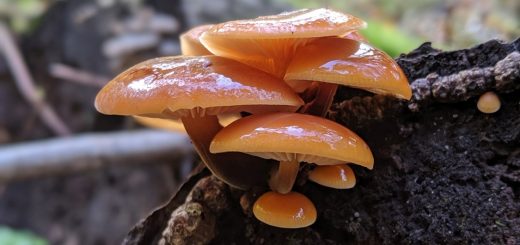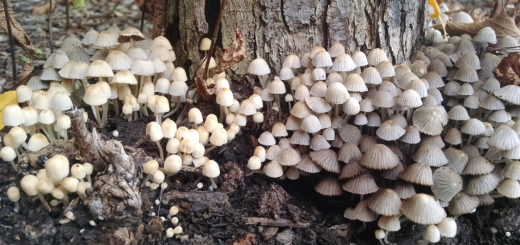#151: Cantharellus cinnabarinus, the Cinnabar-Red Chanterelle
This chanterelle is one of the most beautiful and distinctive chanterelles, thanks to its bright red color. Cantharellus cinnabarinus is small to medium in size, meaning that you have to pick quite a few if you want to make a meal out of them.
C. cinnabarinus is easy to identify because of its pink-red coloration and false gills. The mushroom is small to medium-sized in relation to other chanterelles, growing only 1-4cm (0.4-1.6in) wide and 1-4cm (0.4-1.6in) tall. Its cap is an eye-catching color that can vary from reddish pink to deep red to reddish orange to pinkish orange. In shape, the cap is roughly circular and centered around the stipe. However, like other chanterelles, the cap often develops lobes and becomes wavy. When young, the edge of the cap is rolled underneath, but this flattens out in maturity. In age, center of the cap may become slightly depressed. The cap lacks any kind of ornamentation and is smooth and dry.
The underside of the cap features false gills, a characteristic that differentiates chanterelles from the other gilled mushrooms. In chanterelles, the false gills are blunted at the edges, rather like corrugated cardboard. True gills are knife-like and have thin, pointed edges. This distinction is fairly easy to see, so most people find it easy to identify chanterelles. In C. cinnabarinus, the false gills run down the stipe, branch irregularly, develop frequent cross-veins, and are the same color as or a bit paler than the cap. This surface drops spores that en masse are whitish, sometimes with shades of pink.
C. cinnabarinus has a stipe that is the same color as the cap, but is often paler towards the base. At first, the stipe is roughly equal in width at the top and bottom, but at maturity the stipe is usually tapered so that the base is smaller. Like the cap, the stipe is smooth and unornamented. Inside the mushroom, the flesh is whitish or a pale version of the cap color. C. cinnabarinus has a fragrant and somewhat sweet odor and a taste that is mild, pleasant, or a bit peppery.
The Cinnabar-Red Chanterelle is a common find in North American hardwood forests east of the Rocky Mountains. C. cinnabarinus is mycorrhizal with a variety of hardwood trees, especially oak and beech. It often fruits in large numbers on the ground under these trees, although the mushrooms are usually well-spaced and finding them all may take some careful searching. These mushrooms are often found near the edges of woods, which makes them easier to find. Like other chanterelles, these mushrooms appear in the summer and fall.
There is one other chanterelle that looks exactly the same as C. cinnabarinus. This mushroom, C. texensis, was described in 2011 following DNA analysis of Texas chanterelles. Unfortunately, you need a microscope to tell the difference between these two species. Since C. texensis was discovered so recently, the extent of the mushroom’s range is unknown. For the moment, C. texensis is known only from the forests of eastern Texas. There could be other “cryptic” species hiding in the current definition of C. cinnabarinus, since DNA studies of American chanterelles are ongoing. If you remember to check for the presence of false gills, you will not confuse C. cinnabarinus with any other mushrooms.
Like other chanterelles, C. cinnabarinus is edible. However, it is unlikely that you find enough mushrooms to make an entire meal from the Cinnabar-Red Chanterelle. As a result, C. cinnabarinus is usually just added to other chanterelle dishes.
See Further:
http://www.midwestmycology.org/Mushrooms/Species%20listed/Cantharellus%20species.html
http://www.mushroomexpert.com/cantharellus_cinnabarinus.html
http://www.rogersmushrooms.com/gallery/DisplayBlock~bid~5712.asp
http://ncrfungi.uark.edu/species/99_cantharellusCinnabarinus/cantharellusCinnabarinus.html









![#011: Characteristics of Kingdom Fungi [Archived]](https://www.fungusfactfriday.com/wp-content/themes/hueman/assets/front/img/thumb-small-empty.png)

